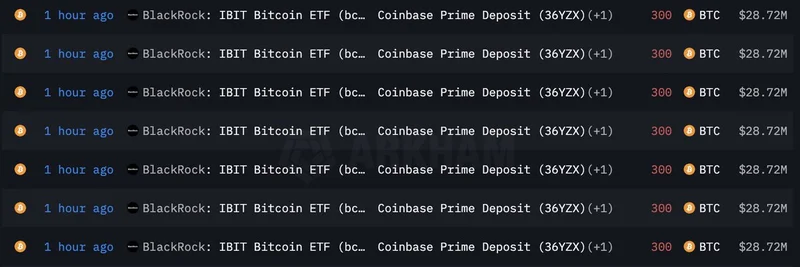A recent tweet from BSCNews has the crypto world buzzing with a wild yet surprisingly convincing theory: Could Jack Dorsey, the co-founder of Twitter (now X) and Block Inc., actually be Satoshi Nakamoto, the pseudonymous inventor of Bitcoin? Shared on November 17, 2025, the post links to an in-depth article on BSC News that dives into this speculation, backed by a slew of coincidences that are hard to ignore.
For those new to the scene, Satoshi Nakamoto is the name used by the person or group who created Bitcoin back in 2008, releasing the whitepaper and the first version of the software. Satoshi vanished from the online world in 2011, leaving behind a mystery that's fueled endless debates, documentaries, and yes, even meme coins. Bitcoin, often called digital gold, is the original cryptocurrency, powering a market worth trillions today.
The theory isn't entirely new but gained fresh momentum thanks to Matthew Sigel, Head of Digital Assets Research at VanEck, who tweeted his conviction about it. He called the connections "compelling" and suggested verifying them could stabilize Bitcoin's massive market. The core of the argument comes from researcher Sean Murray, who compiled a list of eerie parallels between Dorsey's life and Satoshi's actions.
Key Evidence Linking Dorsey to Satoshi
Let's break down some of the standout points from the article. While each one might seem like a stretch on its own, together they paint a intriguing picture:
Cypherpunk Roots: Back in 1996, Dorsey was part of the cypherpunks mailing list, a group of privacy advocates using cryptography to push for social change. This community, with around 1,300 members, is where many early crypto ideas brewed.
Anonymous Ambitions: In 2001, Dorsey blogged about wanting to make big changes without revealing his identity – a perfect match for Satoshi's anonymous style.
Cryptography and Late-Night Coding: Dorsey's 2003 bio highlighted his interest in cryptography and pseudonyms, plus his habit of coding at 4 AM. Interestingly, the original Bitcoin files were timestamped at exactly 4 AM.
Currency Critique: Also in 2003, he advocated ditching the US dollar for barter or trading systems, echoing Bitcoin's goal of decentralizing money.
Sailor Symbolism: Dorsey often calls himself a sailor, and the first Bitcoin code includes a quote about sailors and time-keeping devices.
Location and Timing Matches: On January 10, 2009, Satoshi's IP traced to California, where Dorsey lived. Plus, key Bitcoin milestones align with Dorsey family birthdays: the first transaction on his mom's, Satoshi's forum join on his own, and the last mined block on his dad's.
Wikileaks Connection: In 2010, Satoshi warned against donating Bitcoin to Wikileaks. Soon after, a court ordered Twitter (Dorsey's company) to hand over Wikileaks data, and Satoshi stopped posting the day before.
Cultural Nods: In 2013, Dorsey's friend Alyssa Milano wrote "Hacktivist," a book depicting him living a double life under a pseudonym. Dorsey himself has been spotted in Satoshi t-shirts and frequently praises the Bitcoin creator.
For the full rundown, check out Murray's original thread on X.
Why This Matters for Meme Tokens and Crypto Culture
At Meme Insider, we're all about meme tokens – those fun, community-driven cryptos often inspired by internet jokes, viral trends, or cultural icons. Theories like this one are meme gold. Remember how the search for Satoshi has spawned countless memes, from conspiracy boards to satirical coins? If this Dorsey theory catches fire, we could see a wave of new meme tokens poking fun at it – think $DORSEY or $SATOSHIJACK, blending Bitcoin lore with Twitter drama.
More seriously, confirming (or debunking) Satoshi's identity could shake the entire blockchain space. Bitcoin's price might swing wildly if fears arise about Dorsey dumping holdings. For meme token creators and traders, this highlights how narratives drive value. Meme coins thrive on hype, and a story this juicy could inspire fresh projects on chains like Solana or Base, where quick launches turn ideas into tokens overnight.
It's also a reminder of blockchain's roots in privacy and decentralization. Meme tokens often embody that spirit, letting anyone create and trade without gatekeepers. Whether Dorsey is Satoshi or not, the mystery keeps the community engaged, debating, and innovating.
Wrapping Up the Speculation
Is Jack Dorsey really Satoshi Nakamoto? The evidence is circumstantial but stacked high enough to make you wonder. As the article notes, this theory stands out from past guesses (like Hal Finney or even governments) because of the personal ties. Dorsey's known passion for Bitcoin – he's integrated it into Block and even resigned from Twitter to focus on crypto – adds fuel to the fire.
For now, it's all speculation, but in crypto, speculation is king. Keep an eye on X and forums for updates, and if you're into meme tokens, watch for ones riffing on this tale. Who knows? The next big meme could be born from this very theory.
Stay tuned to Meme Insider for more on how such stories influence the wild world of meme coins and blockchain tech. If you've got thoughts on this theory, drop them in the comments!

